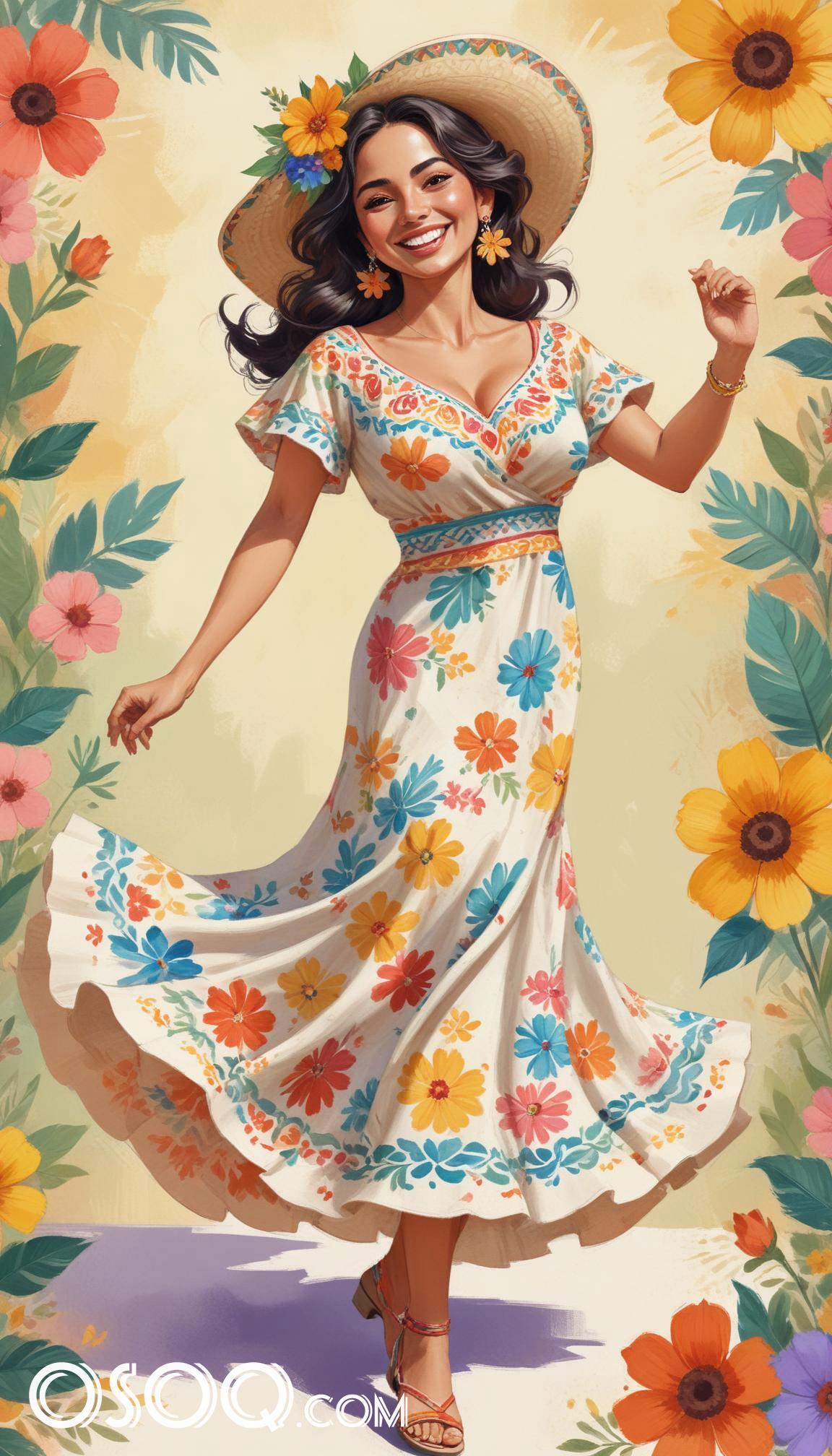Mexican Art
- caricature /
- Mexican Art

Mexican art is deeply influenced by its rich history, blending ancient indigenous traditions with European styles brought over during the colonial period.

One of the most iconic symbols in Mexican art is the vibrant use of colors, which often represent different aspects of Mexican culture, such as red for the blood of indigenous people and green for hope.

Frida Kahlo and Diego Rivera are two of the most famous figures in Mexican art, known not only for their unique styles but also for their political activism.

Many Mexican murals tell powerful stories of revolution, class struggle, and the daily lives of common people, making public art an important aspect of Mexican identity.

Pre-Columbian influences in Mexican art can be seen in the use of symbols like the jaguar, the serpent, and the sun, all of which played significant roles in ancient mythology.

Mexico’s Day of the Dead celebrations have inspired countless pieces of Mexican art, particularly in the creation of colorful sugar skulls and other symbolic imagery that honors the deceased.

Mexican folk art, often called “arte popular,” is renowned for its handmade crafts like pottery, textiles, and masks, reflecting centuries-old traditions passed down through generations.

Artists like José Clemente Orozco, David Alfaro Siqueiros, and Rivera pioneered the Mexican Muralist movement, bringing large-scale art to the masses with themes of social justice and Mexican history.

One key characteristic of Mexican art is its connection to nature, with many artists incorporating the landscape, animals, and plants native to Mexico into their work.

Frida Kahlo’s self-portraits often explore themes of identity, pain, and personal suffering, reflecting not only her life experiences but also broader aspects of Mexican art's emotional depth.

While Mexican art is often associated with traditional or folk elements, contemporary Mexican artists are making waves globally with abstract, conceptual, and politically charged works.

The influence of Catholicism in Mexican art can be seen in its many religious paintings and sculptures, often depicting saints, the Virgin Mary, or biblical scenes in a distinctly Mexican style.

Some Mexican artists, like Rufino Tamayo, blended European modernism with traditional Mexican themes, creating a unique fusion that set their work apart internationally.

Artisans in Oaxaca, Mexico are famous for their intricate wood carvings called “alebrijes,” which are fantastical creatures painted in bright, contrasting colors, capturing the imagination of collectors worldwide.

The traditional Mexican art form of “papel picado,” or cut paper, is used during festivals and celebrations to create intricate designs that represent everything from flowers to skeletons.

Mexican art continues to evolve today, as new generations of artists reinterpret cultural traditions and explore contemporary issues through different media.

The Aztec and Mayan civilizations had their own highly developed forms of art, with stunning stone carvings, jewelry, and pottery that continue to inspire Mexican artists today.

Frida Kahlo's "La Casa Azul" in Mexico City is now a museum, allowing visitors to step inside her life and artistic world, offering a deeper understanding of the personal side of Mexican art.

Mexico's connection to surrealism is strong, with many artists, including Kahlo, incorporating dreamlike, fantastical elements into their work that challenge reality.

Today, Mexican art remains a vital part of global culture, appreciated for its depth, color, and the way it captures the spirit of the people.